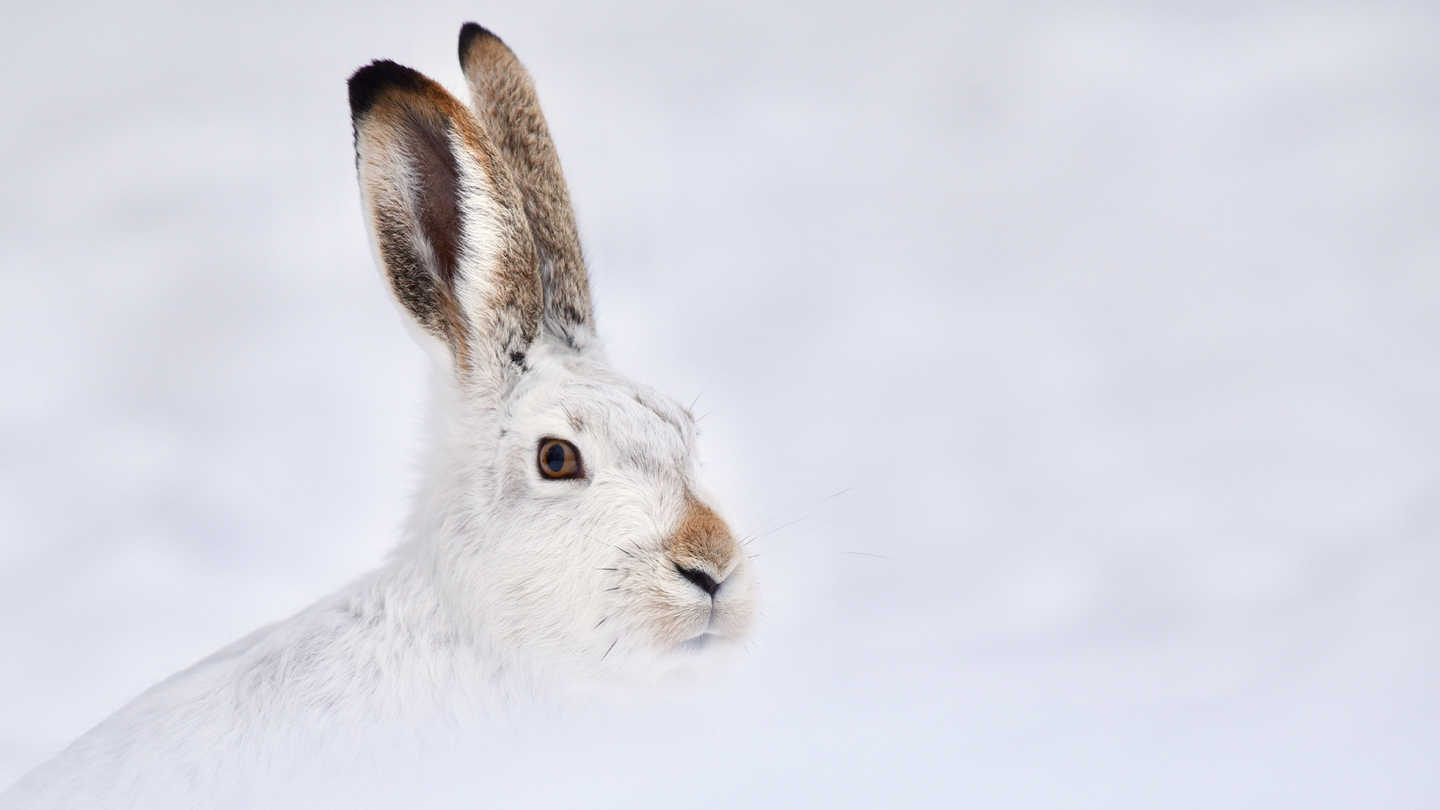Jackrabbit’s color-changing fur may prepare them for climate change
The color-changing mammal is only one of 20 species that change shades with the seasons.

As winter melts into the spring, flowers start to bloom and some unique animals also begin to change color. The white-tailed jackrabbit is one of close to 20 species of animals and birds that have evolved to change colors with the seasons. The rabbit is not white all year, changing from its winter white into spring and summer brown with the season. It’s a survival tactic, as darker hued animals stand out to predators in snowy climates.
A team of researchers from the United States and Portugal sought out to learn more about the genetics involved in these colorful seasonal changes. Their study, published today in the journal Science, details the evolution of winter camouflage in white-tailed jackrabbits. They uncovered how the genes that control this winter color variation could be a key to their survival as the planet warms and snow cover reduces.
[Related: How a peculiar parasitic plant relies on a rare Japanese rabbit.]
“Several members of the research team live and work in the Rocky Mountains, with a close connection to nature and the incredible changes that we are all experiencing year to year in the intensity of extreme weather and climate,” study co-author and ecologist/evolutionary biologist Jeffrey Good from the University of Montana, told PopSci.
When beginning this research over a decade ago, Good said that a team member discovered a natural history study from 1963 which described more complicated, but intriguing patterns of continuous color variation in a white-tailed jackrabbit population in Colorado.
Study lead author and evolutionary biologist Mafalda Sousa Ferreira from BIOPOLIS-CIBIO at the University of Porto in Portugal was conducting this research as part of her PhD and took a closer look. “This made this part of my PhD project a bit risky,” Sousa Ferreira told PopSci. “If the paper was correct, we could explain something very unique, but if we couldn’t sample the specimens to characterize it, I might have to rethink part of my thesis.”
With this half a century old clue in tow, they used museum specimens collected over the years to characterize the variations in color. The oldest of their 196 specimens dated back from 1906, sourced from multiple museums including the Denver Museum of Nature & Science and the American Museum of Natural History in New York. Importantly, they confirmed the study from 1963 on color variation in white-tailed jackrabbits.
“It is very exciting to see something described years earlier materialize like that before your eyes. The high-risk project was actually possible, and eventually successful!” said Sousa Ferreira.
[Related: This hybrid hummingbird’s colorful feathers are a genetic puzzle.]
After categorizing the fur color variation, the team then used genetic sequencing and determined that the jackrabbits’ color variation in winter is primarily determined by three genes (EDNRB, CORIN, and ASIP) that control the production and localization of melanin pigments.
“Fur coat color is determined by pigments that are produced in special cells in the skin (melanocytes). You can think of these cells as pigment factories. How active these factories are—what type of pigment (black and brown, red and yellow) and how much is produced determines the color of hair,” explained Good.

This process is quite common across mammals and are the same pigments that determine the color and darkness of hair in humans. Jackrabbits can display white, brown, or more intermediate-colored coats depending on what versions they get from their parents.
After establishing how winter color variation, the environment, and the rabbit’s genetics were related, they combined these results with climate projections on expected snow loss due to climate change.
Surprisingly, they found that rabbit populations with higher variability in their color genes should be well prepared to face snow loss over the next 100 years. These projections indicate that the winter-brown jackrabbits will actually expand their range and could even help rescue the whole species from decline.
It was a welcome bit of positive news, but the team still cautions that human-caused threats (disease, habitat loss, etc.) put this adaptability in jeopardy and highlights the importance of conservation at the species level.
“The jackrabbits and their coat colors show how understanding and preserving the genetic diversity of a species is just as important, particularly in this rapidly changing natural world,” said Good.
